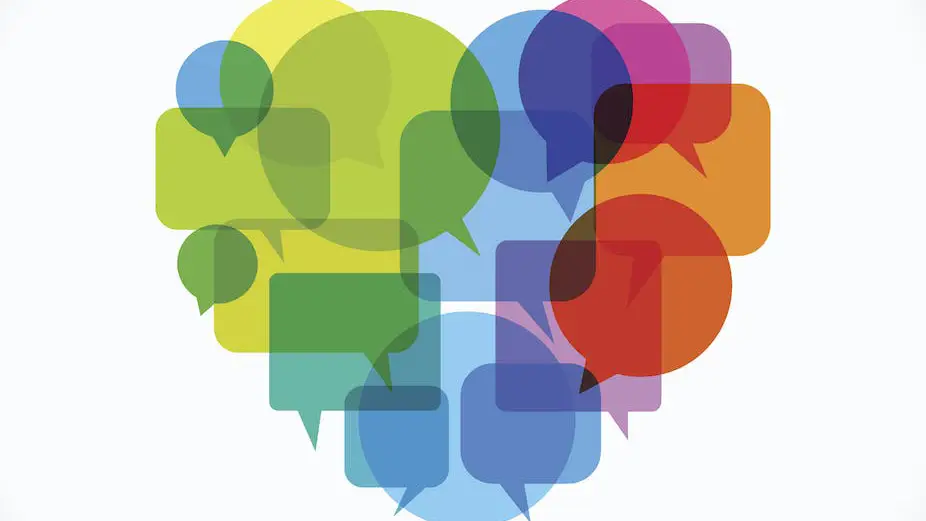






Shaw teaches Classical Chinese Philosophy
Professor Clerk Shaw has spent years preparing for the Classical Chinese course by reading texts from the 6th – 3rd centuries BCE, auditing a Chinese Intellectual History course, co-organizing a translation and discussion group that has met weekly. Some of the texts include the Analects (Confucius or Kongzi) and later texts from the entry of Buddhism into China. The course was created in response to undergraduates inquiring as to why there were no non-Western philosophy course taught. The assignments and texts selected for this course are designed to provide the student with an opportunity to “reflect on the intrinsic interest” of the text and “reflecting on how we learn new material in general”.
Course Description: Classical Chinese philosophy discusses the full range of topics familiar from other philosophical traditions: ethics, politics, epistemology, mind, language, and more. Its texts contain some views and arguments familiar from Western philosophy (e.g., forms of virtue ethics and impartialist consequentialism) but often in different forms (e.g., different core virtues or different arguments for impartiality). In other cases, the basic categories and views seem more fundamentally different (e.g. the relationship between the heart-mind [xin] and body as compared to Western discussions of metaphysics of mind). Studying classical Chinese philosophy thus stands to improve philosophical understanding and expand our sense of the views one might hold and of how one might defend them. Further, because its schools and texts have deeply influenced both Chinese and global life, culture, and politics, studying it can improve our grasp of history and of the modern world



Cureton delivers the Rezendes Ethics Lecture at the University of Maine
Professor Adam Cureton visited The University of Maine to deliver the Rezendes Ethics Lecture entitled “Disclosing a Disability at Work: Respect, Discrimination, and the Ethics of Informal Attitudes”.

Georgi Gardiner Published in ‘The Conversation’
Are you really in love? How expanding your love lexicon can change your relationships and how you see yourself

What is love? Could those feelings you label as love be something else?
What about infatuation? Obsession? A passing fancy? Being smitten? Enthrallment? Beguilement? Lust? A crush? A squish? Platonic admiration? Why do people categorize some attachments as romantic love but not others?
Suppose Holly meets someone on vacation. They quickly become romantically and sexually intimate and seem deeply compatible. Holly is from the U.K., where the term “holiday romance” is commonly used and part of her vocabulary. Because she knows this term, she can apply its social scaffolding to this relationship. She understands that the rapid emotional intimacy and apparent compatibility she experienced likely sprang from fleeting circumstances that aren’t meant to last.
Someone from the U.S., however, where this term is rarely used, might more easily interpret this rapid intimacy as a sign of deep, significant lifelong compatibility.
Judging that you are in love can be powerful. It can affect your feelings, relationships and even your sexuality. But how do people judge whether they are in love?
This, I argue, depends on your linguistic community. That is, how the people around you talk about romance, relationships and attraction.
I am a philosopher who studies categorization schemas – how, when and why people label things such as emotions, sexuality and health. I examine the effects of those labels on how people understand themselves and on their well-being, and how alternative taxonomies and labels can make people understand and shape the world differently.
What happens when a culture instills a broader, more encompassing definition of love, or a narrower, more restrictive definition? How does having a richer vocabulary of words in the neighborhood of love change how we understand it?
The social scaffolding of words
Self-ascriptions of love depend on two things. The first are introspective judgments about your feelings: Are you attracted to the person? Energized by them? Nervous around them? And the second is what you think love is: Does love require caring about the person? Thinking about them a lot? Sexual attraction? When how you feel about a person and what you think love is match up, you self-ascribe love. That is, you judge that you are in love.
Words provide social scaffolding. That is, they create expectations and norms that steer how you behave and react to other people. And vocabularies vary by culture and era.
Categorizing an attachment as a “holiday romance” doesn’t just describe it but can also change its course. The label affects what Holly notices and values about the time she spends together with another person and whether she is inclined to pursue a long-term relationship.
Vocabulary is empowering. Having an even more expansive vocabulary would allow Holly to experiment with different labels, and these could shape her relationships in different ways.
For example, the term “eintagsliebe,” based on the German word for “mayfly” and translating to “one day’s love,” refers to an intense and brief relationship. “Comet lovers” have a deep romantic bond but see each other only intermittently, living far apart the rest of the time without much contact. A “holibae” is a perennial date that happens only when you’re visiting home for the holidays. See also “zipcoding” – dating someone only when you’re both in the same ZIP code.
The dictionary of polyamory
Words create possibilities, and the recent surge of interest in polyamory, or having more than one romantic relationship at a time, has introduced substantial amounts of new vocabulary.
An “anchor partner” is a central figure in your romantic life. A “nesting partner” is a partner you live with. And a “satellite partner” has emotional and physical distance from your home. Vocabularies sculpted by traditional monogamous relationships might not distinguish between these types of attachments because they see non-cohabitating partnerships only as temporary transition phases that end by breaking up or become serious by moving in.
By rejecting the mainstream social scaffolding about relationships, polyamory creates the need for more terms to describe innovative relationship structures. And those words in turn create more possibilities for how polyamorous people interpret and structure their attachments.

“New relationship energy” is the buzzing excitement of a new relationship. “Established relationship energy” is the comfort of a stable, long-term relationship. These emotions are especially salient within polyamorous relationships, where the excitement of a new relationship can arise alongside the comfort of preexisting relationships.
But monogamous relationships also benefit from these linguistic innovations. Monogamous relationships might also involve new relationship energy, established relationship energy, and nesting, anchor and satellite partnerships, even if they aren’t labeled as such. Such self-understandings affect the values, emotions, commitments and beliefs people use to forge relationships.
Conceptual tourism
Conceptual schemas, or the words and concepts we have for understanding ourselves and the world around us, have permissive flexibility: People can disagree about what words like “love,” “crush” and “bi-curious” mean. Disagreement doesn’t mean that someone is wrong. Rather, flexibility allows us to explore different ways to understand the world and ourselves. We can be conceptual tourists.
Suppose Nell develops an ambiguous attachment to a new classmate. She finds her charming, witty and pretty, but it isn’t a clear-cut case of romantic attraction. Nell can adopt a broad or narrow definition of the word “crush,” depending on whether her feelings meet how she defines a “crush.” Altering what she means by a “crush” would change whether she labels herself as having a crush. This, in turn, could affect whether Nell sees herself as queer or straight.
If she knows other terms to describe her feelings, Nell might interpret them as “alterous attraction,” which is the desire for emotional intimacy in a way that is neither platonic nor romantic. She might seek a “queerplatonic relationship,” which resembles a conventional romantic relationship but without sex or conventional romance. Or, if her feelings are intense, Nell might self-ascribe “limerence,” which is obsessive infatuation.

Self-ascribing labels affects what people notice about themselves, how they interpret their feelings and what they appreciate about their attachments. What she pays attention to fuels particular emotions and can bolster certain attitudes, like profound gratitude, that might distinguish love from crushes.
For example, if Nell interprets herself as having a crush, she may become more attuned to the excitement she feels around her classmate, which can fuel those emotions in a feedback loop. If she labels her feelings as platonic admiration, she might instead interpret herself as being nervous about impressing her new classmate.
Nell can experimentally adopt different labels – alterous attraction, queer, crush, limerence, straight and more – to see which fit best. Some labels might better match her emotions. And those labels might also change her emotions and become self-fulfilling prophecies.
Conceptual tourism can be a valuable cognitive skill. It requires the mental dexterity to inhabit rival conceptual schemas and try on new interpretative terms. Doing so can increase your self-understanding, cultivate self-determination and even help steer your heart.
Culture unavoidably provides a lexicon of attachment that shapes how you relate to other people. A culture that is more deliberate about the words it uses for different kinds of attraction can help people bond in new and more open-minded ways.
It’s also a great motivator for education: Learning new words can help you improve your love life.
Georgi Gardiner, Associate Professor of Philosophy and Fellow of the University of Tennessee Humanities Center (UTHC), University of Tennessee
This article is republished from The Conversation under a Creative Commons license. Read the original article.